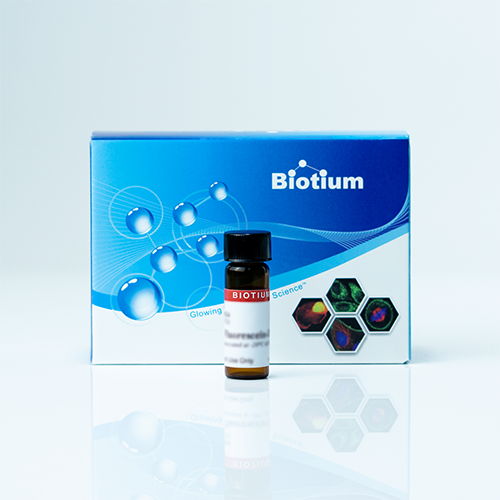Sulforhodamine G
Similar to other sulforhodamine dyes, the highly water-soluble sulforhodamine G can also be used as a polar tracer for the studies of cell morphology and neuronal cell-cell communication (1-3).
This product is available by special order only.
Please fill in the inquiry form and we will contact you shortly.
Please fill in the inquiry form and we will contact you shortly.
Wishlist updated! View wishlist
Product Description
Similar to other sulforhodamine dyes, the highly water-soluble sulforhodamine G can also be used as a polar tracer for the studies of cell morphology and neuronal cell-cell communication (1-3).
- λEx/λ Em = 529/548 nm
- Orange red solid soluble in water
- Store at room temperature
- C25H25N2NaO7S2
- MW: 530.6
- [5873-16-5]
References
1. Meth Enzymol 221, 234 (1993).
2. J Biol Chem 267, 18424 (1992).
3. Plant Cell Environ 17, 257 (1994).
You may also like…
Sulforhodamine B
Similar to other sulforhodamine dyes, the highly water-soluble sulforhodamine B can also be used as a polar tracer for the studies of cell morphology and neuronal cell-cell communication (1-3). In addition, sulforhodamine B has been shown to be a superior protein stain for use in the quantification of cellular proteins of cultured cells.
Sulforhodamine 101
Sulforhodamine 101 has a longer absorption wavelength than does sulforhodamine B. Like sulforhodamine B and G, in addition to their potential use in cancer drug screening, these fluorescent dyes have been primarily used as polar tracers for the studies of neuronal cell morphology and cell-cell communication.
CF® Dye Dextran 10,000 MW, Anionic and Fixable
CF® Dye labeled dextrans could be used as a fluorescent fluid-phase markers to study cell permeability, endocytosis, or mechanisms of biomolecular delivery. The dextran is 10,000 MW, and contains a formaldehyde-fixable free-amine group.
CF® Dye Biocytin
CF® Dye biocytin is a cell-impermeant, fixable polar tracer that is a conjugate of CF® Dye and biotin with an aldehyde-fixable primary amine. Polar tracers are commonly used to investigate cell-cell and cell-liposome fusion as well as membrane permeability and transport through gap junctions or cell uptake during pinocytosis.
α-Bungarotoxin, CF® Dye and Other Conjugates
Conjugates of α-Bungarotoxin labeled with a selection of our CF® Dyes and other labels. Labeled α-bungarotoxin conjugates can be used for staining nicotinic acetylcholine receptors at neuromuscular junctions in tissue sections.
Nerve Terminal Staining Kits
Nerve Terminal Staining Kits contain Biotium's nerve terminal dyes and accessories for washing away or quenching extracellular dye fluorescence.


